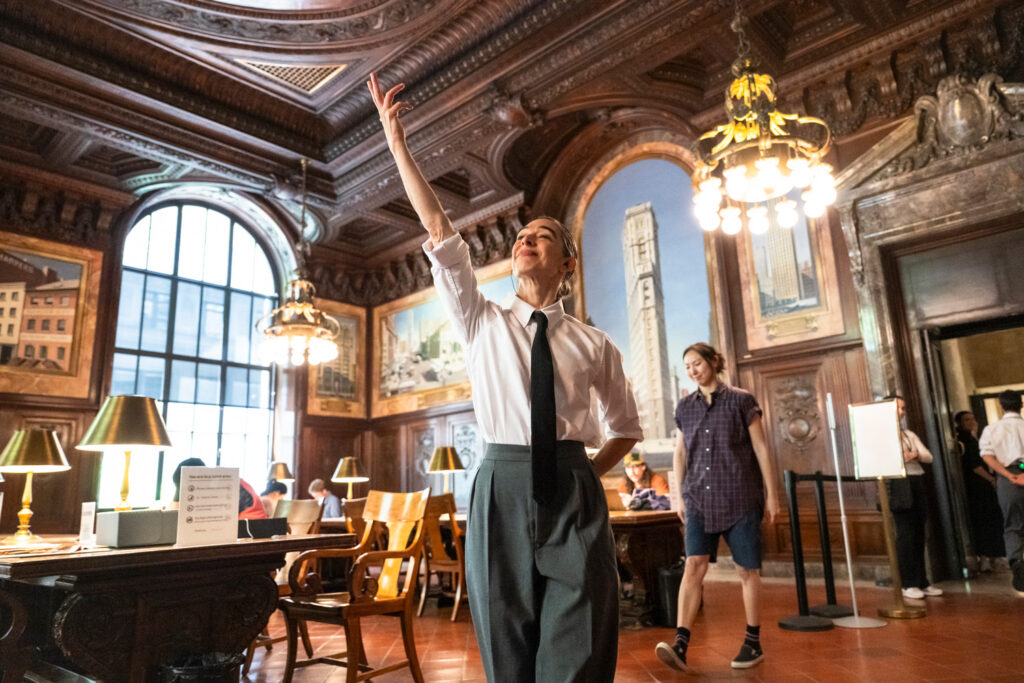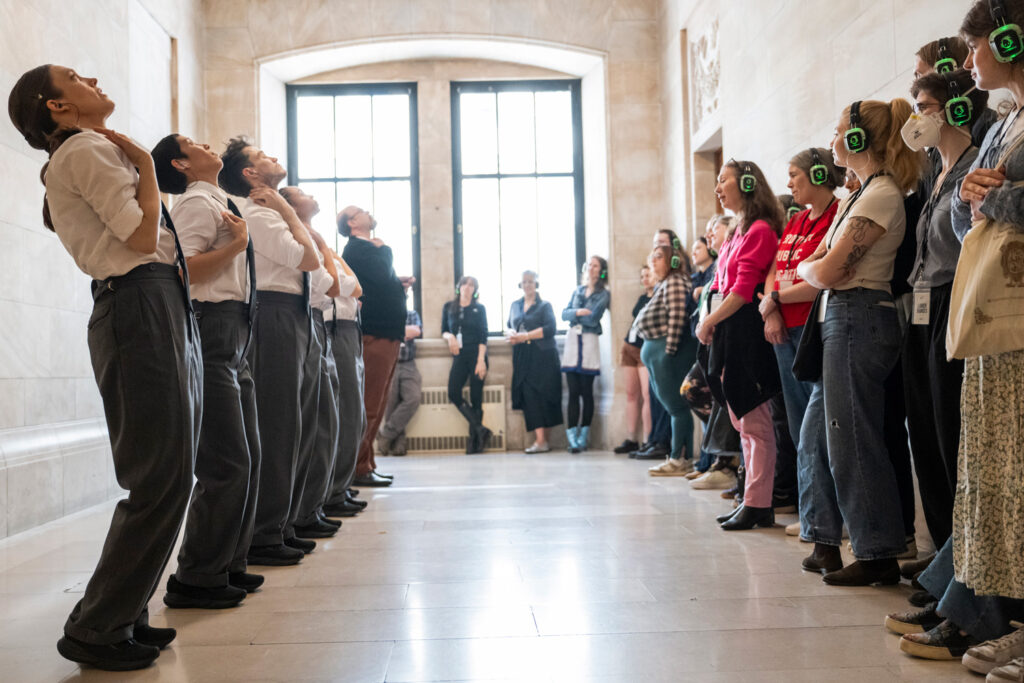As a native New Yorker, I’m ashamed to admit I’d never been inside the flagship New York Public Library. That changed on a recent weekend, when, as an audience member at Monica Bill Barnes’ Lunch Dances, I ended up donning neon-green headphones and jogging around the iconic landmark with my hands in the air.
Lunch Dances is the perfect introduction to the library. But it’s also a statement about the ways physical media can evoke emotion. The hour-long ramble through the building—in which audiences, chaperoned by Barnes and her dancers, meet a collection of characters whose (fictional) stories are narrated by Barnes’ collaborator Robbie Saenz de Viteri—is a love letter to New York City and its history, as well as the library and its librarians.

We began in the DeWitt Wallace Periodical Room, where Barnes and Saenz de Viteri told the story of two queer women—one exploring old underground zines, the other various tabloids, each falling for the other. We then followed our guides to the Maps Room, where we met a disabled woman using old maps of New York to relive her childhood without having to move from her seat. As we watched a writer loitering outside of the Frederick Lewis Allen Room, a space reserved for writers, we learned about a collection of matchbooks from various Jewish delis throughout New York history. In the Bill Blass Public Catalog room, we were told a story of a Black mother searching for pieces of her family history to pass on to her daughter. In the Picture Collection Room, we found a woman who, the narration told us, was searching through images for a tattoo that reminded her of her dead wife.
The narration was so strikingly poetic that at times I forgot to look around, which is where Barnes and her dancers came in—gesturing towards certain landmarks, reminding me that I was in a place of history, without which none of this would be possible. Through all of these stories, Barnes and Saenz de Viteri illustrate the different ways print media can keep people and histories alive, and how hard librarians work to provide this service. And they manage to incorporate moments of both sardonic and laugh-out-loud humor.
As we arrived at the final room, the massive Rose Main Reading Room, we found it packed with (nonperforming) people. It felt like everyone in the space was part of the piece, somehow moving in time with the music and narration they couldn’t hear. As we watched Barnes and her team, onlookers watched us, too. We were simultaneously observing the piece and being the piece.
During Lunch Dances’ final moments, Saenz de Viteri asked us to remove our headphones. As soon as I was disconnected from the narration, I began to wonder, What are these people here for? What are these strangers thinking about? What are their stories? That’s the impact of Lunch Dances: Suddenly, you’re finding meaning in mundane actions, someone flipping a page or typing on a laptop.

Then, our security guard for the performance, whom I’d assumed was just a library employee tasked with ensuring we didn’t mess with anything, broke into a moving rendition of the song “People,” from the musical Funny Girl. Around us, people looked up from their computers in shock. Some laughed uncomfortably or nudged their friends. But then that embarrassment turned into something else—genuine interest. The piece became a gift to audience members and passers-by alike.
Lunch Dances satisfies a very human voyeuristic impulse. I can’t tell you how many times I’ve wandered around New York wondering what was happening inside other people’s heads. Lunch Dances gives us a chance to find out. I left feeling like I’d been let in on a secret—a whisper between friends—and that the library had so many more secrets to tell me. Next time I’m there, I’ll have to go searching for them.
The post Revealing New York Secrets With Monica Bill Barnes and Company appeared first on Dance Magazine.